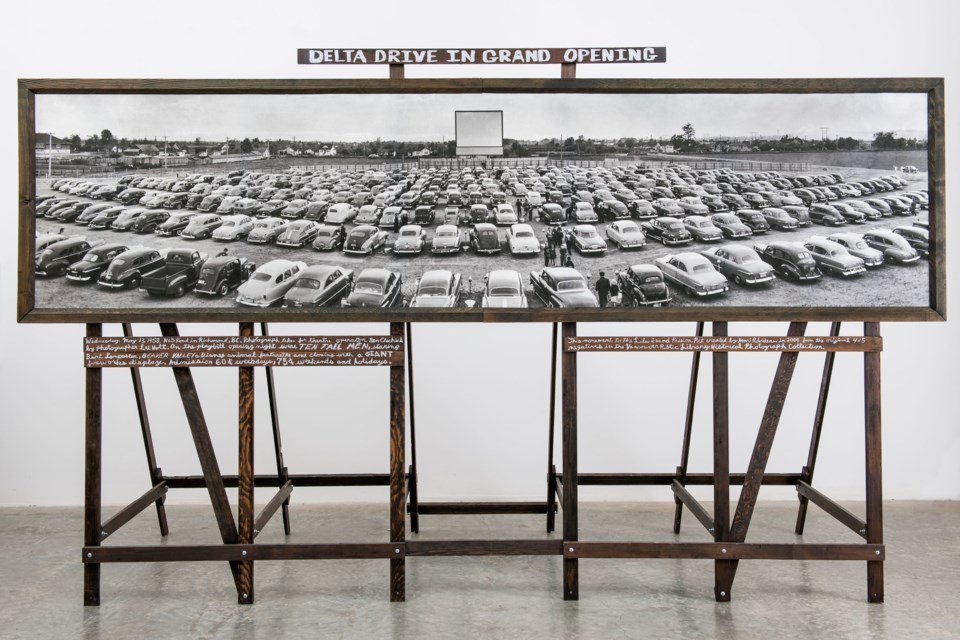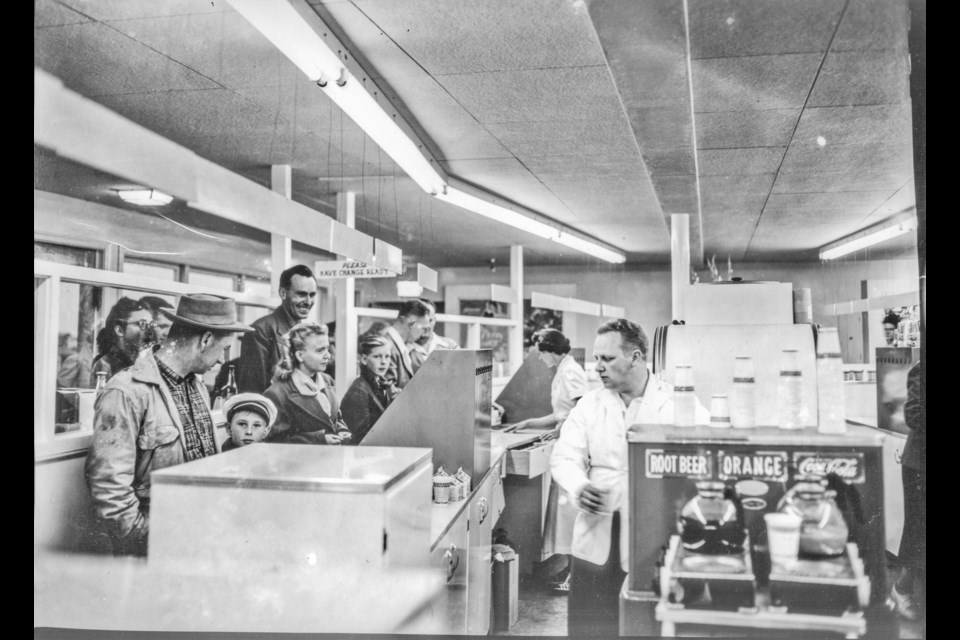In a field circled by farms in Richmond’s East Cambie neighbourhood, hundreds of neatly parked vehicles faced an oversized screen.
Drivers and their passengers waited with anticipation, each having paid 60 cents for the privilege. Once daylight began to disappear, the screen lit up with the film Ten Tall Men starring Burt Lancaster, followed by a screening of the Walt Disney short feature Beaver Valley. A fireworks display capped the evening.
So was the night of May 13, 1953 when the Delta Drive-In — Richmond’s one and only outdoor movie theatre — opened for business.
The Delta was among the many drive-in theatres that began springing up across Canada and the U.S. after the war. Relatively cheap land and the rise of the automobile sparked the craze, and families loved the convenience.
Its reputation as a venue for teenaged romance was perhaps undeserved, as movie-goers were overwhelmingly families with kids, notes author Kerry Segrave in Drive-In Theatres: A History From Their Inception in 1933. Families saw the drive-in as a place to spend time together. Parents didn’t have to dress up, dinner could be ordered at the theatre’s snack bar, and babysitters weren’t required — kids went in their pajamas.
“(The drive-in) was ideal, as the family practically didn’t have to set foot out of their car once they entered it in their own driveway,” according to Segrave. “Anyone who opened an outdoor theatre in the 1940s or 1950s made money almost in spite of him- or herself. The film on the screen was largely irrelevant, as long as it was wholesome.”

At Delta Drive-In, kids would play on a swing set while waiting for the sky to darken and the movie to start. And between films, an advertisement urged customers to visit the snack stand and load up on hamburgers, hot dogs, drinks and of course, buttery popcorn.
Located on No. 5 Road, north of Cambie Road, the Delta was close enough to Mitchell elementary that the screen could be seen from the school field. Besides its double bills, the theatre’s Sunday swap meets were also popular draws.
On opening night, Leon Holt had a one-of-a-kind view of the theatre. The photographer was hired to capture the historic night on film, so he climbed onto the snack bar roof to shoot a panoramic image of the grounds before the show started.
Artist Henri Robideau first saw that image in the 1970s while working at Vancouver Public Library as a photo technician. Holt’s wife, Simma Holt, had brought in the negatives for advice on how to rid them of a horrible smell. Robideau solved the problem by cleaning the aging negatives, then returned them.
Years later, after Holt’s death, the negatives were donated to the library. This time Robideau made some prints. He unearthed them in 2009 while archiving his work, and the panoramic photograph of the Delta Drive-In stood out.
“I was really compelled by the image. It was so incredible,” said the retired Emily Carr University instructor.
“You could see all these people, kids in their cars, people walking around before the movie starts. It’s taken at a really good moment, just minutes away from starting — the place is full.”
It struck him that, with modern technology, he could enlarge the photograph to show its rich detail. Robideau scanned and retouched the image, printed it on a three-by-12-foot canvas and mounted it on wooden scaffolding he designed to mimic the structure that once supported the drive-in screen.
“The photograph is so fabulous, I didn’t want to just stick it to a wall,” he said. “The scaffolding that the picture is on is to be a reference to that era of outdoor advertising and billboards so it could be freestanding and sit in the middle of a room and not be on a wall, sort of like a drive-in movie theatre screen is.”
Robideau’s finished product, “Delta Drive-In Grand Opening”, formed part of the Emily Carr faculty show in 2010. Artists Ken Gerberick and Janis Corrado were so taken by it, they spent weeks researching and identifying all 320 vehicles in the photo. The Chevrolet was the most popular — there were 77 at opening night.
The Delta is believed to have closed in 1980, a time when many other drive-in screens went dark. Segrave concludes in her book that drive-ins simply didn’t change with the times.
“Drive-ins seemed to be full all the time. All of this made it much more difficult to try and adapt once a decline set in. In the end, they couldn’t.”


.jpg;w=120;h=80;mode=crop)
